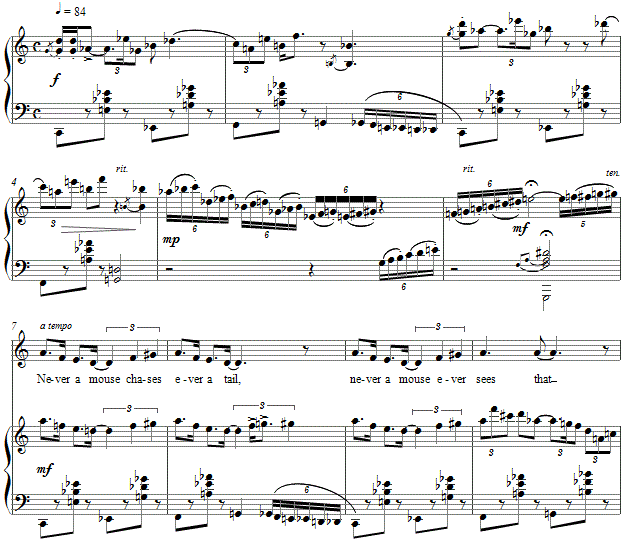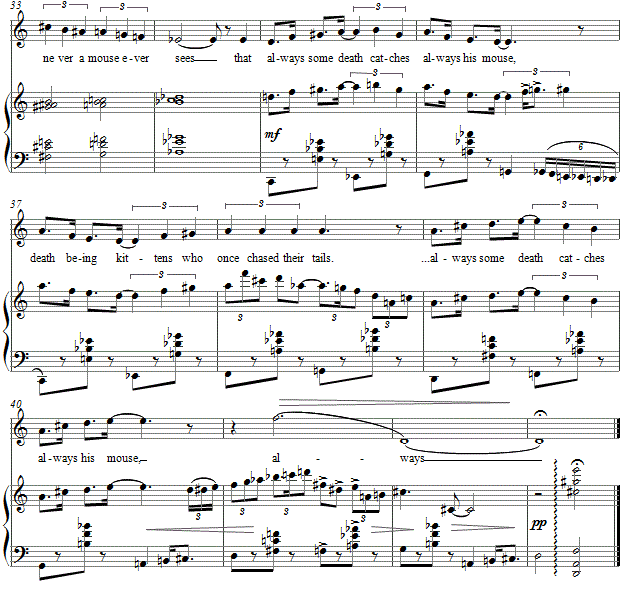Music and Texts of GARY BACHLUND
Vocal Music | Piano | Organ | Chamber Music | Orchestral | Articles and Commentary | Poems and Stories | Miscellany | FAQs
Geometry - (2010)
Alfred Kreymborg
for medium voice and piano
Never a mouse
chases ever a tail,
never a mouse ever sees
that always a cat
catches always a mouse,
cats being kittens
who once chased their tails.
Toss a pebble into a stream,
never a circle catches a circle;
shoot a dawn-ball
into the sky,
never a moonbeam
catches a sun;
drop the same thought
on the floor:
Only a kitten catches a tail,
the tail being straight,
the kitten a circle.
Yet never a mouse
chases ever a tail,
never a mouse ever sees
that always some death
catches always his mouse,
deaths being kittens
who once chased their tails.[ 3 pages, circa 2' 10" ]
Alfred Kreymborg
Alfred Kreymborg (1883-1966) was an American poet, playwright, editor, anthologist, puppeteer and chess master, as well as having served as president of ASCAP - The American Society of Composers, Authors and Publishers. The text is taken from his The Blood of Things (1920).
As I was finishing the small cycle of Dickinson texts in memory of a friend, my wife and her colleague from the Teatro Liceu in Barcelona, Mark Hastings, were involved in score study of Alban Berg's Lulu, as Mark was getting advice from Marilyn regarding how to assist the singers in rehearsal from the piano-vocal score. He had visited over two days, and had dinner with us as well. Mark has commented on how tonal much of the work seemed, and with this I agree, especially in comparison to later twelve-tone advocates whose pre-compositional planning seemed to guarantee the greatest dissonances possible, indicating their hardened a priori aesthetic choices.
As the Berg score is based on rather "tonal" tone rows and some of the conversation over this last weekend was about recognizing the rows as themes for various characters, I decided to wrap two of these rows -- the Geschwitz and Lulu rows -- with the darkly quixotic text of Kreymborg, a text essentially about prey and the predator with which I had been working. Thus, the Geschwitz theme becomes the opening jazz-like gesture in the right hand implying a C minor tonality, though this is juxtaposed with the vocal line in a decidedly D minor region with the raised fourth, the whole being a polytonal mélange.
The Lulu row appears at the playoff, under the vocal line's restated "always." One notes that the right and left hands of the accompaniment indicate competing tonal regions, and this is taken further earlier in the setting, as other transpositions bring this "tonal" piece far afield harmonically to arrive back to its most frequent tonal center.
The score for Geometry is available as a free PDF download, though any major commercial performance or recording of the work is prohibited without prior arrangement with the composer. Click on the graphic below for this piano-vocal score.


